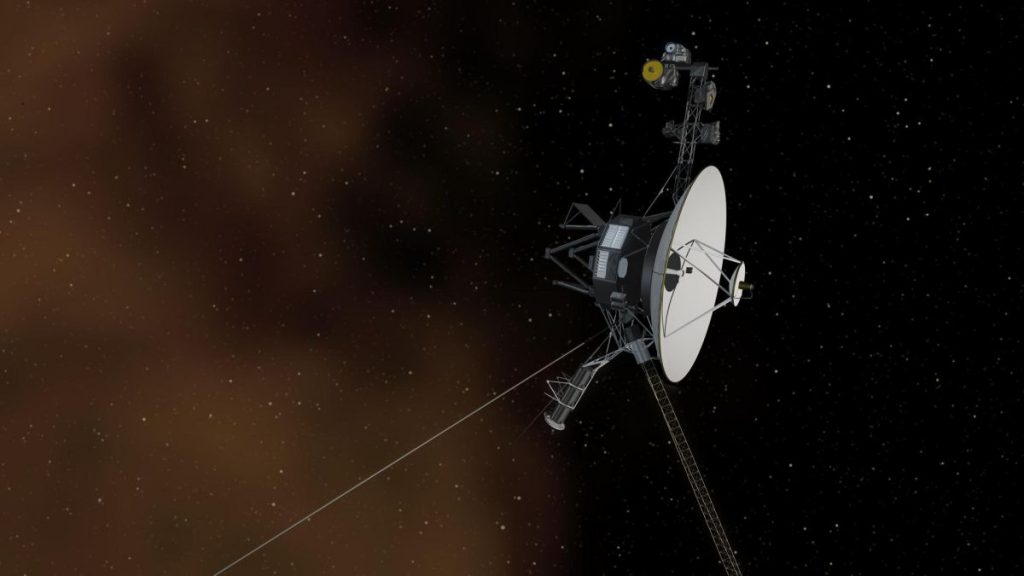Have intelligent aliens ever visited the solar system? It’s not a ridiculous question. After all, the solar system has been around for over 4 billion years, and if intelligent life arose in our galaxy, it may have reached the level of technological sophistication necessary to explore other systems, including our own.
In a new paper, scientists outline how we can look for clues any visitors may have left behind.
The search for extraterrestrial artifacts
There are several main methods for hunting for intelligence outside Earth. The first approach is to look for signs of any kind of life at all, intelligent or otherwise. This is by far the most common method in astronomy, and is usually targeted at other star systems — for example, looking for life-generated chemicals in the atmospheres of other worlds. But the search for extraterrestrial life also considers places within the solar system, like the surface of Mars and the hydrocarbon-rich atmosphere of Saturn’s moon Titan.
Another approach is to look specifically for intelligent life, because presumably, intelligent aliens are capable of making their presence known far more easily than a microbe is. For instance, we can look for communicative aliens that are broadcasting their existence in radio or optical wavelengths. Looking for artificial radio signals is the bread and butter of the search for extraterrestrial intelligence (SETI).
Related: Why are we still searching for intelligent alien life?
But intelligent aliens may also leave other clues. If they become capable of building so-called megastructures, like Dyson swarms, then we can detect those megastructures in searches of other systems. For example, enough large structures around a star would alter the light we see and could be a sign of intelligent activity.
So far, all searches for extraterrestrial life have come up empty. But there is another avenue that is relatively unexplored: the search for extraterrestrial artifacts (SETA). The idea behind this approach is that if aliens become advanced enough, they might want to explore the galaxy, either by themselves or through robotic spacecraft. In the roughly 4.5 billion-year history of the solar system, these aliens would have had plenty of time to swing by our neighborhood and maybe leave a mark.
The leftovers
In contrast to SETI, SETA allows astronomers to dig deep into the past. They don’t have to hope to catch a radio signal from a civilization that is active at the same time we’re listening. In fact, multiple civilizations could have come and gone throughout the galaxy, each one leaving something behind in our solar system before fading from existence (or moving on to something more interesting).
In a new paper posted to the preprint database arXiv, astronomers proposed a strategy for using existing telescopes, surveys and planetary probes to hunt for signs of past alien visits. They discuss three categories of remnants we might detect.
The first category is regular surface artifacts — dead and leftover spacecraft, probes and even just trash. In humanity’s comparatively short time exploring the solar system, we’ve littered the moon and Mars with dozens of defunct spacecraft and random pieces of junk, so it’s not implausible to suspect that a visiting alien civilization would do the same. Plus, because many surfaces in the solar system do not experience weathering or volcanism, an artifact left there could be noticeable for billions of years.
Along with surface artifacts, there can be spacecraft hanging out in interplanetary space — a category commonly known as “lurkers.” They might wait in a stable gravitational Lagrange point or orbit some distant moon. They might be active, monitoring and recording interesting things happening in the solar system, or they might be long dead and not look much different from an asteroid or a comet.
Lastly, we might encounter interstellar artifacts, ones that are never meant to stay put in any one star system but aimlessly wander the galaxy, traipsing from one system to another. We already have several means of detecting these kinds of artifacts, like broad astronomical survey telescopes and planetary missions.
Signs of damage done
Speaking of travel, we might have the capability with existing surveys to find evidence of interstellar and interplanetary adventures. For example, any interstellar spacecraft worth its salt will need some method of propulsion. And because even aliens have to obey Newton’s laws, there will have to be some kind of exhaust to propel the spacecraft. The faster we want the craft to go, the more powerful its exhaust will have to be, potentially making it visible to the James Webb Space Telescope or the Chandra X-ray Observatory.
Interstellar travel could also involve laser propulsion via lightsail, which could be detectable. Or we might find evidence from more subtle clues, like gravitational anomalies — orbits of small objects that don’t quite make sense because they might have been perturbed by a passing craft.
Lastly, we can search for signs of past interference, rather than just passive observation, in the solar system. If aliens opened up a strip mine on Mercury, for example, we would still be able to see it today. Or if heavy equipment is still active, it would have a bit of waste heat associated with it, which would stand out against the radiation emitted by the surface of a planet or moon. Lastly, we may be able to find geochemical anomalies — the result of tinkering with chemical processes on a world (or just outright pollution).
The authors highlighted how we could use current and planned observatories and solar system probes to hunt for these artifacts without having to change their mission parameters. If we’re already scanning the surfaces of planets and imaging large swaths of the solar system, we can piggyback on these campaigns to search for evidence of extraterrestrial life.
Follow us on Twitter @Spacedotcom or Facebook.

